
In March 2019, the Reading Room Resource Centre, Dumigaon, Assangthang, Namchi was opened to the public. While the concept of the Reading Room Resource Centre had developed over many years, the construction of the Library/Reading Room began in 2014. It was planned and drawn by Indrajit Chatterji, a Goa-based architect and executed by Kailash Pradhan, a Gangtok-based architect. The Reading Room Resource Centre has three components: the library holdings, the reading programme and the bilingual website, Sikkim Project.
In our Library Holdings we have more than 5000 books that range from children’s books to history, politics, philosophy, biographies, international relations and the arts. We have books both in Nepali and English. Despite the challenges of lacking trained librarians to classify and operate the library in a systematic manner, we have been successful in running the library in our own ad hoc manner. Going forward, we hope to work towards training librarians to help us run the library more efficiently.
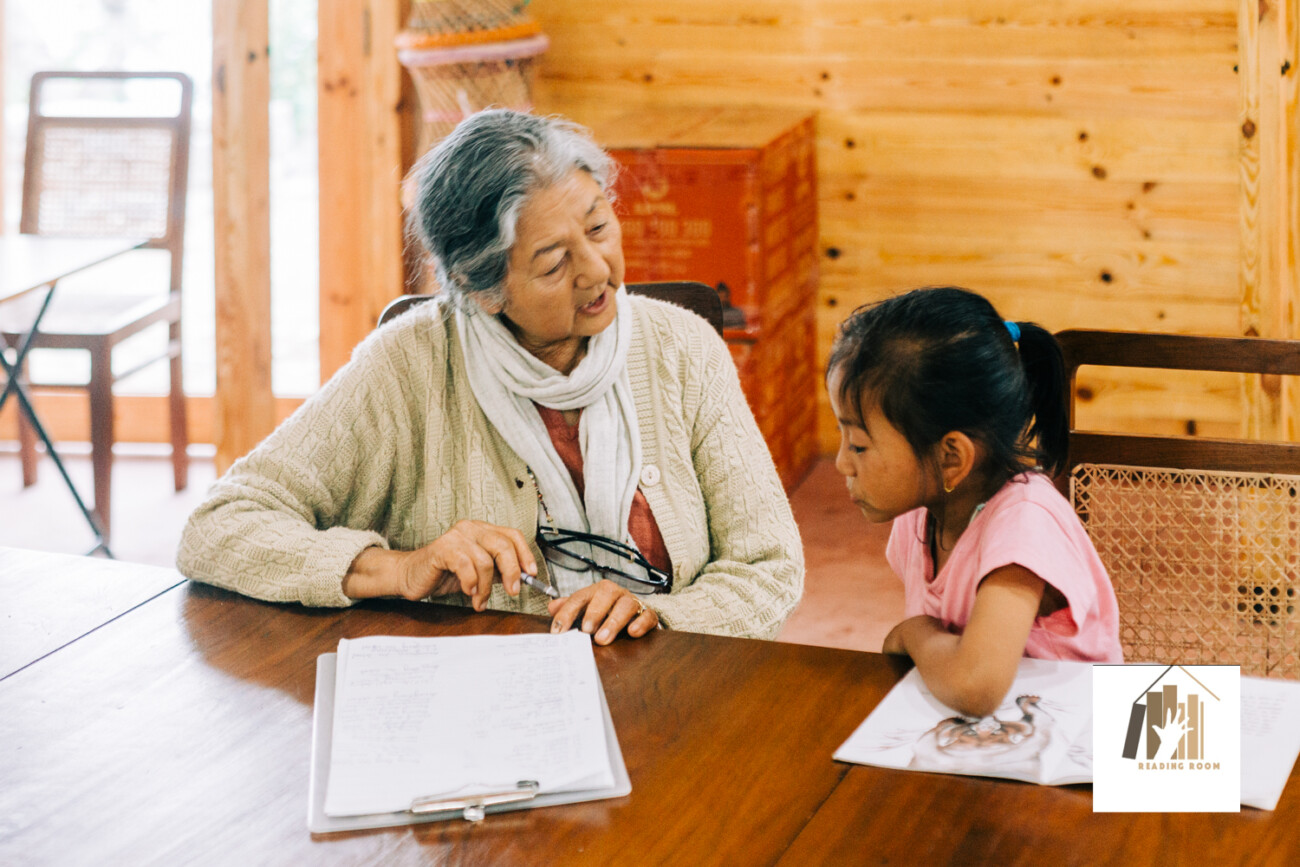
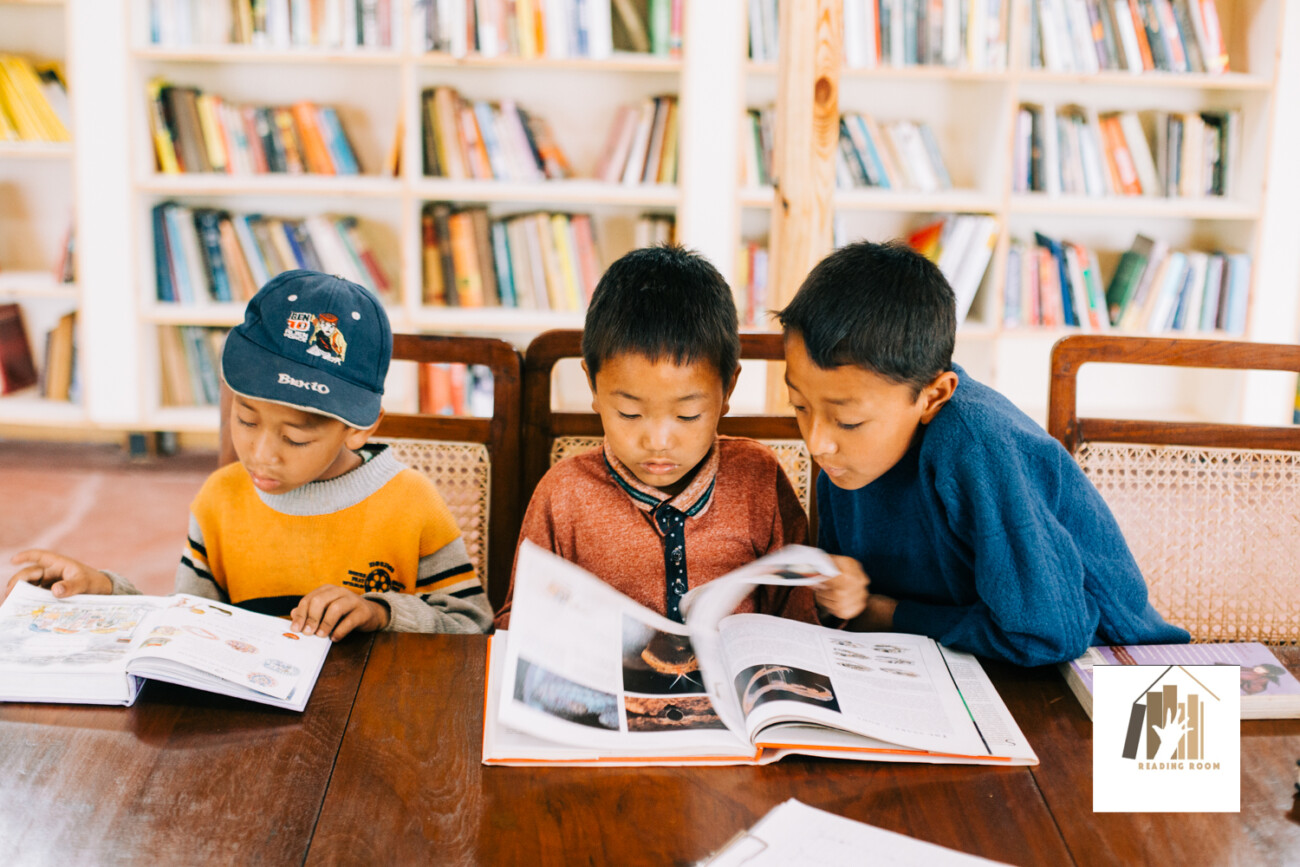
The Reading Room is a safe space dedicated to promoting reading, writing and developing language skills in Nepali and English and to creating a positive learning environment for both children and adults.
The Reading Programme was born out of mutual frustration—mine and of the children who came to the library, whose efforts at education and knowledge were thwarted by their inability to read and/or comprehend in English, the medium of instruction in schools. In 2019, Reshma Thapa Gurung who is an internationally trained and recognized reader teacher, our resource person, conducted a one-day workshop on how to introduce and promote reading among children. The workshop was attended by a few teachers from Udichi Elementary School, Namchi, some college students and the Reading Room Resource Centre team.

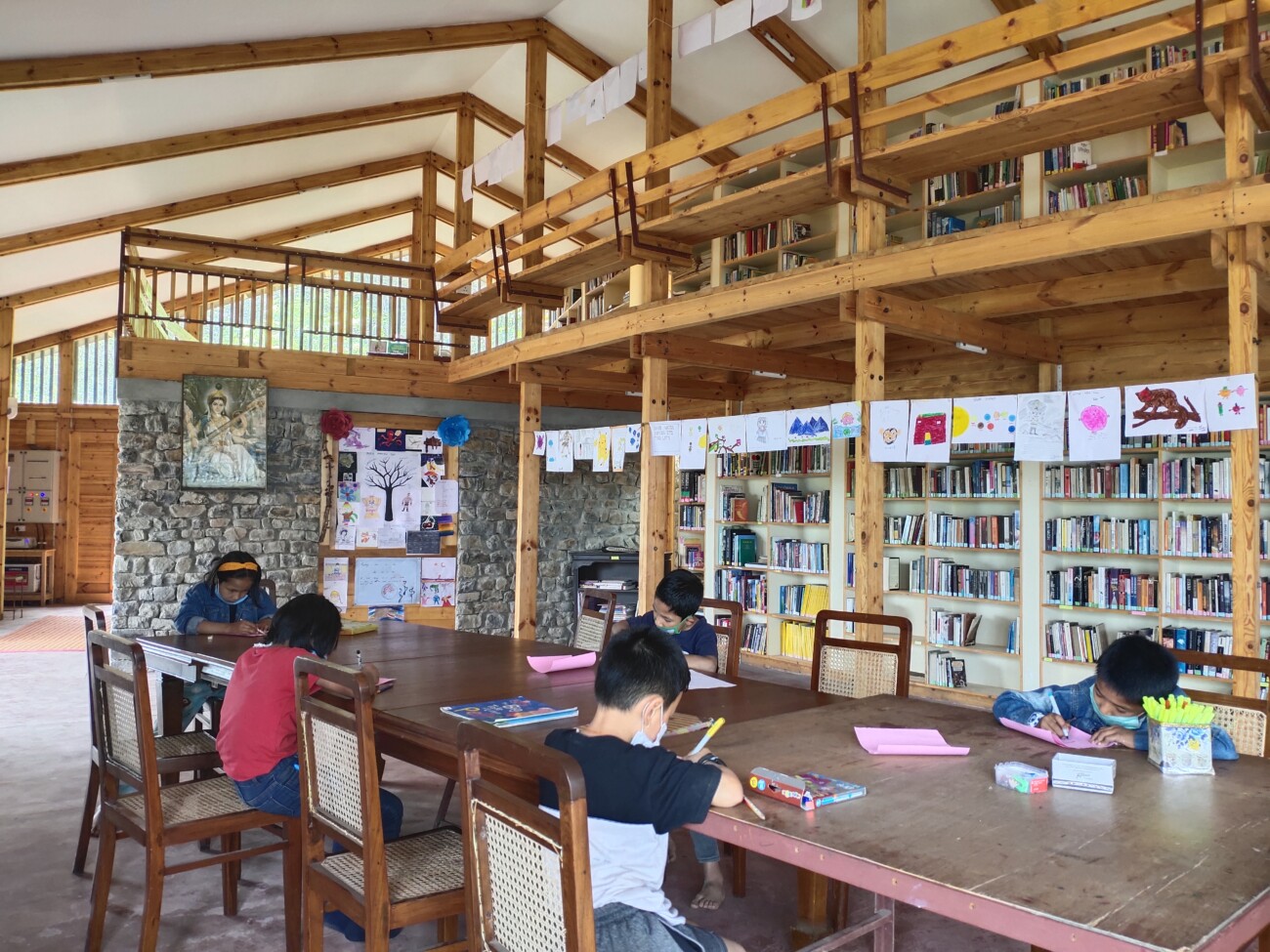
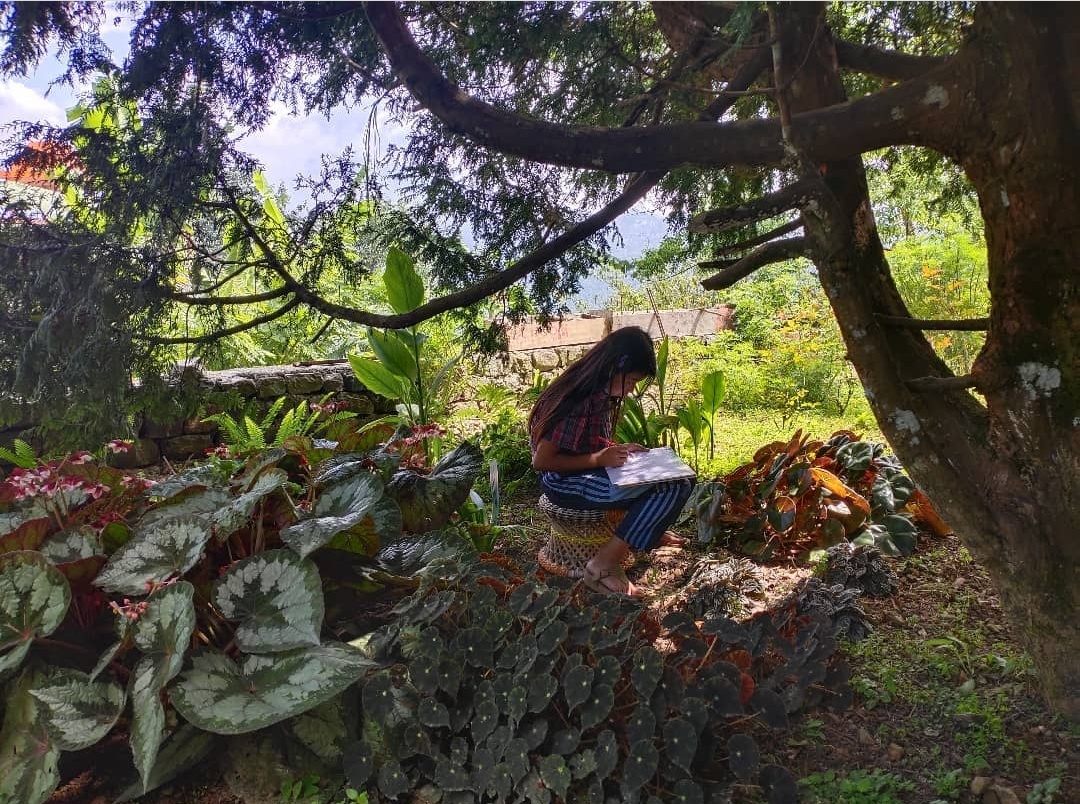
With the aim of supporting learners into becoming reflective, curious and responsible global citizens, the participants, whether they be children or adults, are encouraged to participate on their own volition. This of course means that it’s not always a full house at the Reading Room, but over time we have noticed that they come whenever they can, which is really encouraging!

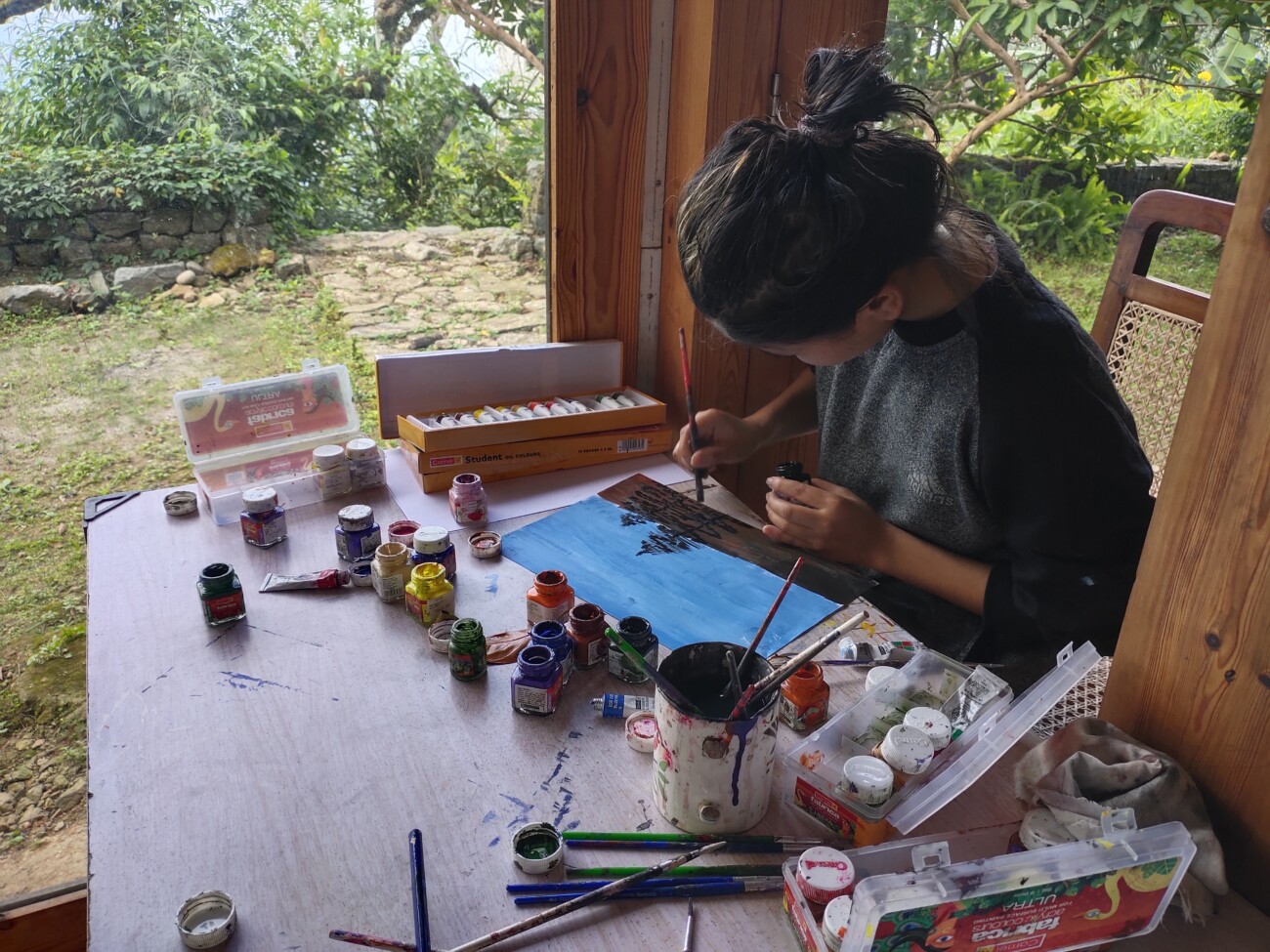

In November 2021 we initiated a school reading project called, ‘Reading for Joy’ with the aim of addressing illiteracy amongst school children; over time this project has evolved into one of the most important components of the Reading Room. This initiative was received with interest and enthusiasm by the Heads of different schools in Assangthang, Purano Namchi, Gurunggaon and Salghari.
An orientation session was arranged for the teachers to discuss the needs and challenges of their schools in terms of reading and literacy education. The project was officially launched on 19th November 2021 at an induction meeting organized by the Reading Room. The meeting was attended by 17 language teachers from the primary section of four different schools. After the induction meeting with the teachers, we conducted our first introductory reading activity in their schools in December. The model text used for read-aloud was ‘How to Catch a Star’ by Oliver Jeffers. We reached out to more than 80 children in the introductory sessions.

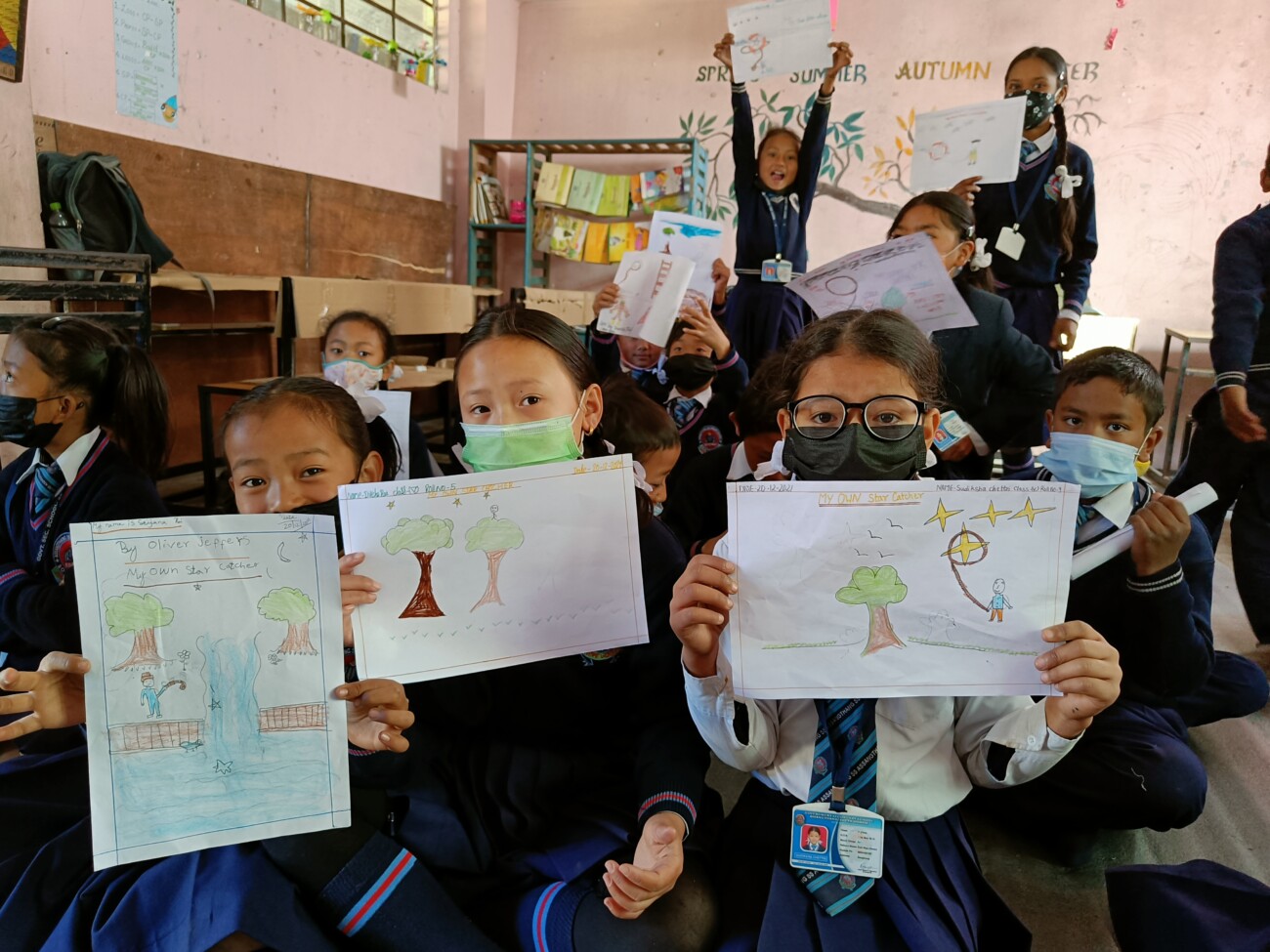

In July 2022, the Heads of collaborating schools were invited to the Reading Room to brainstorm about the future of the project and their expectations. The Heads of Schools proposed (a) an orientation workshop on reading strategies to be conducted for their language teachers and (b) an increase in the number of visits between the schools and the library. Following on from these proposals, a two-day orientation workshop was conducted in July 2022 which was led by Ms. Reshma Thapa Gurung. Eight English teachers from primary and middle school attended the orientation. As per the suggestions of the Heads of Schools, we have scheduled and initiated regular visits between the schools and the library. Ms. Reshma Thapa Gurung also leads the Reading Facilitation Training, an inhouse professional development training at the Reading Room, attended by four trainee reading teachers.
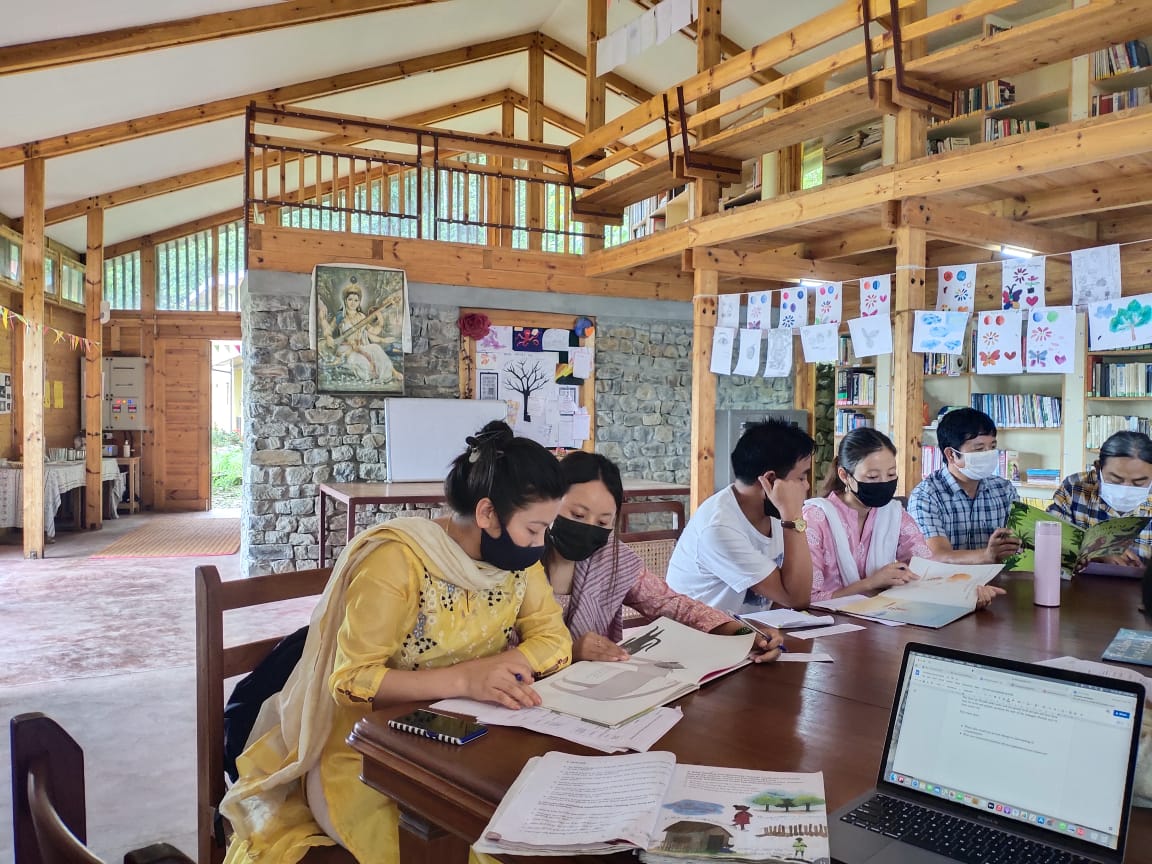
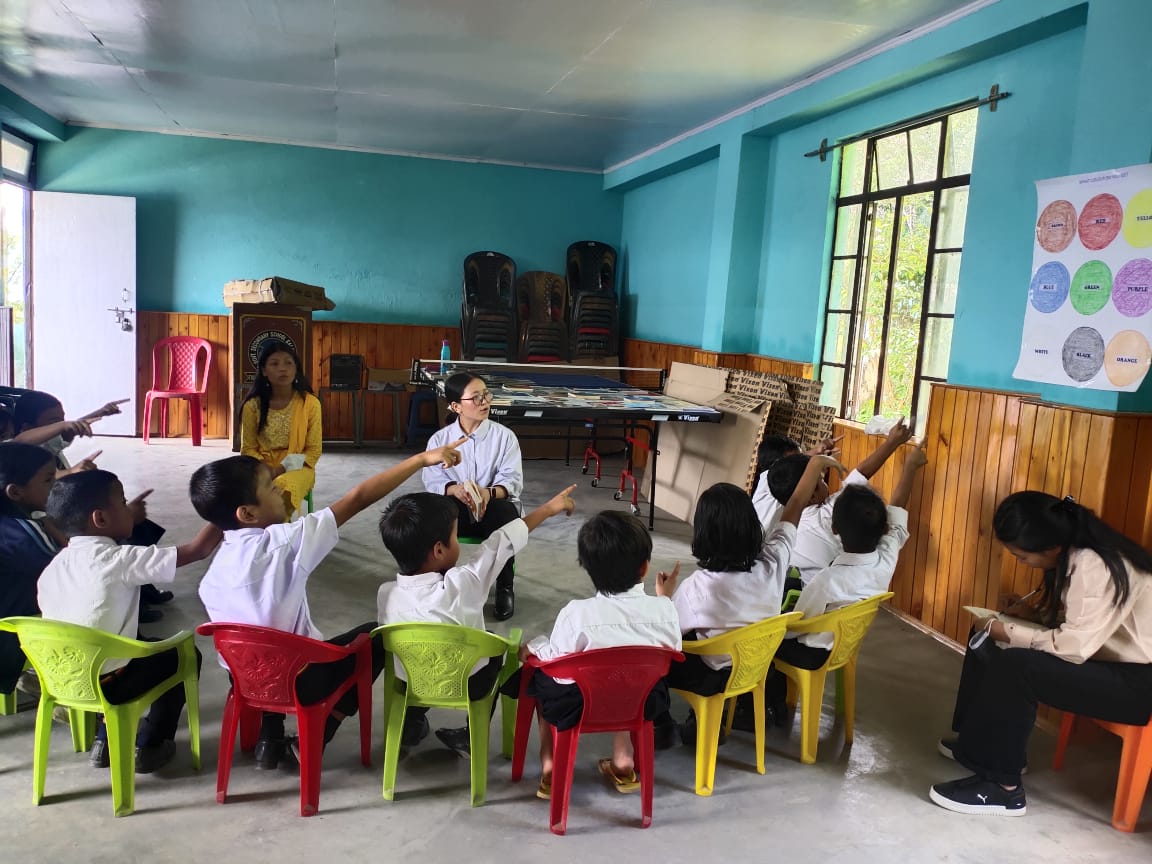
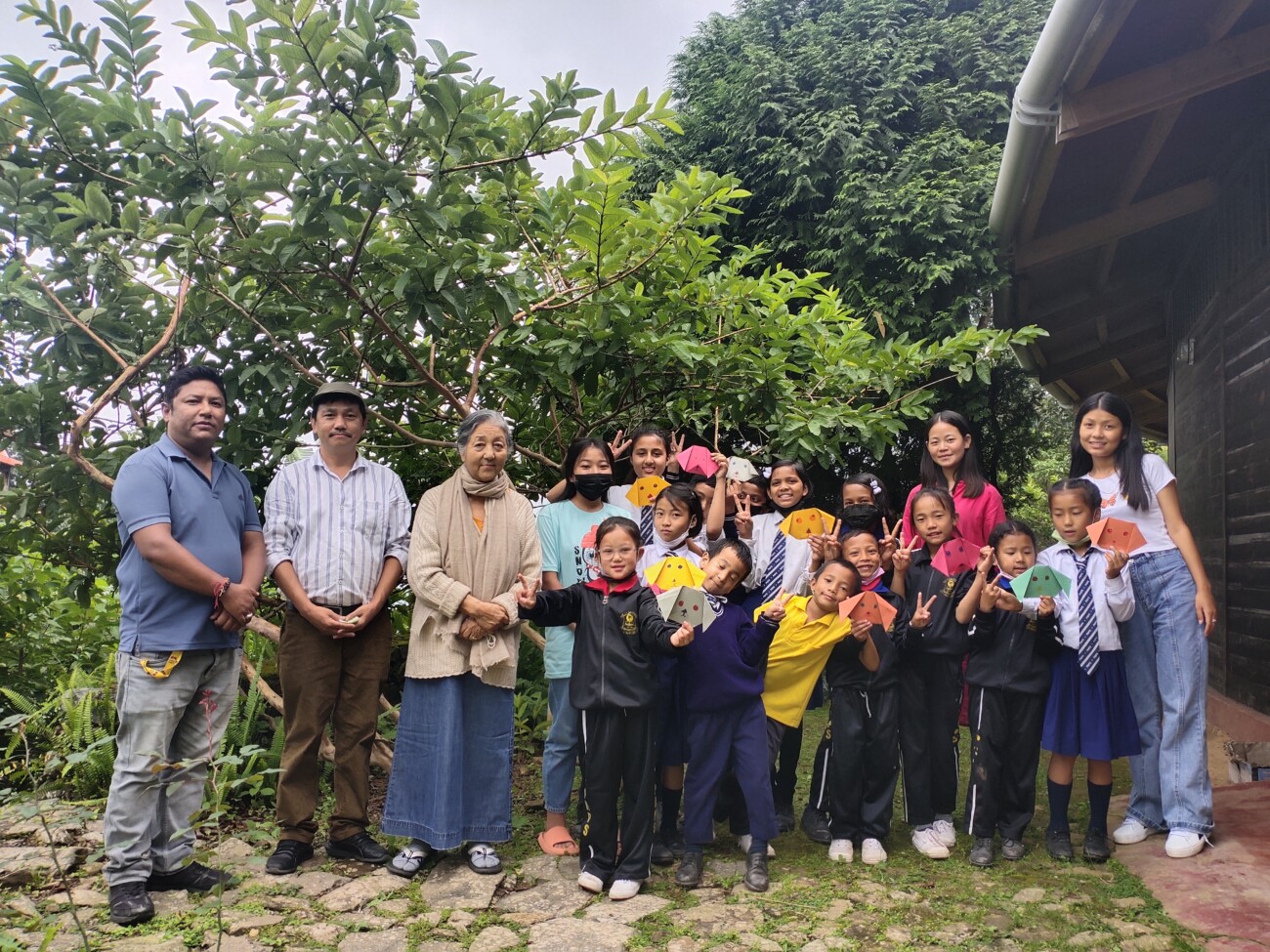

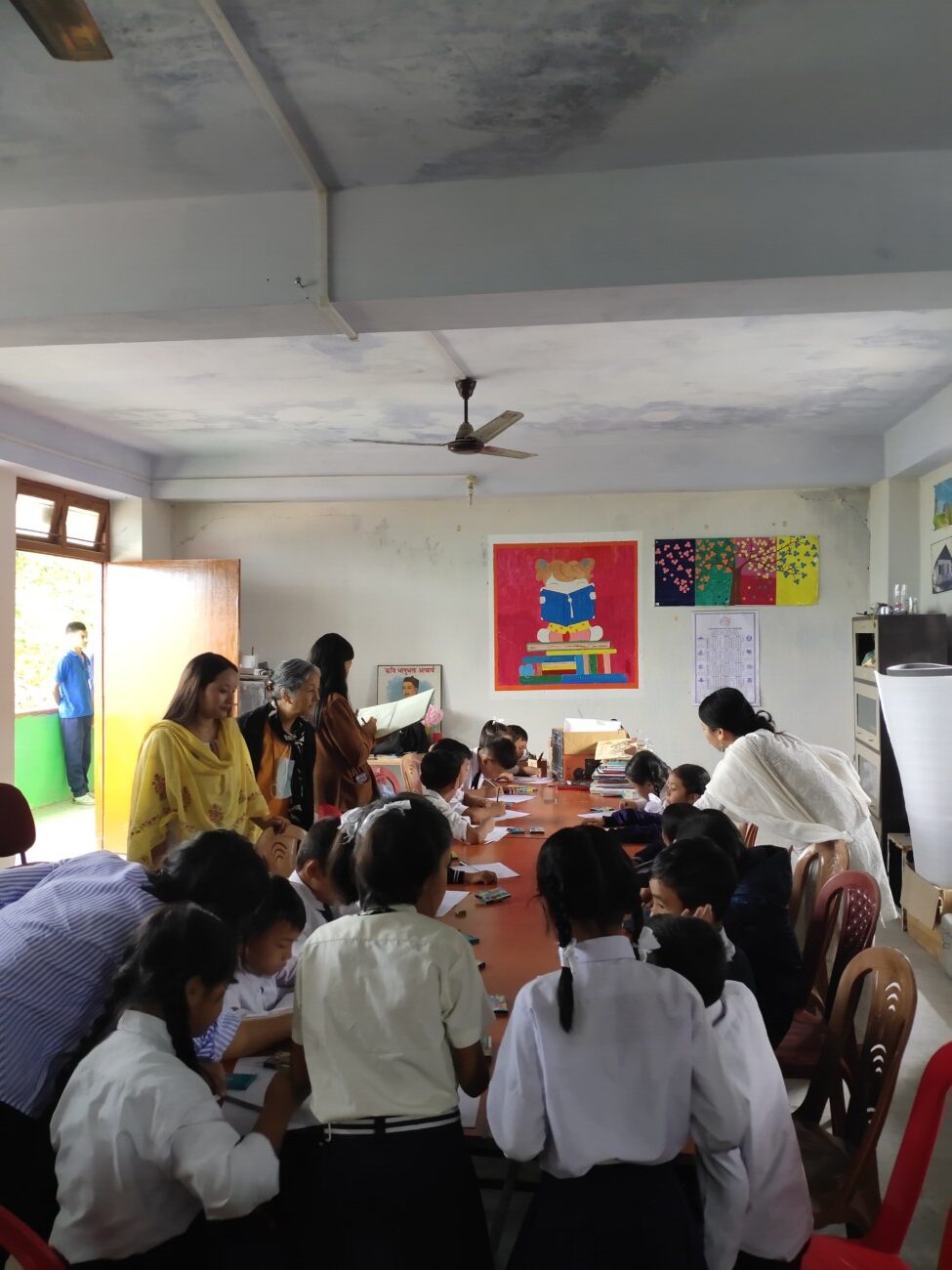
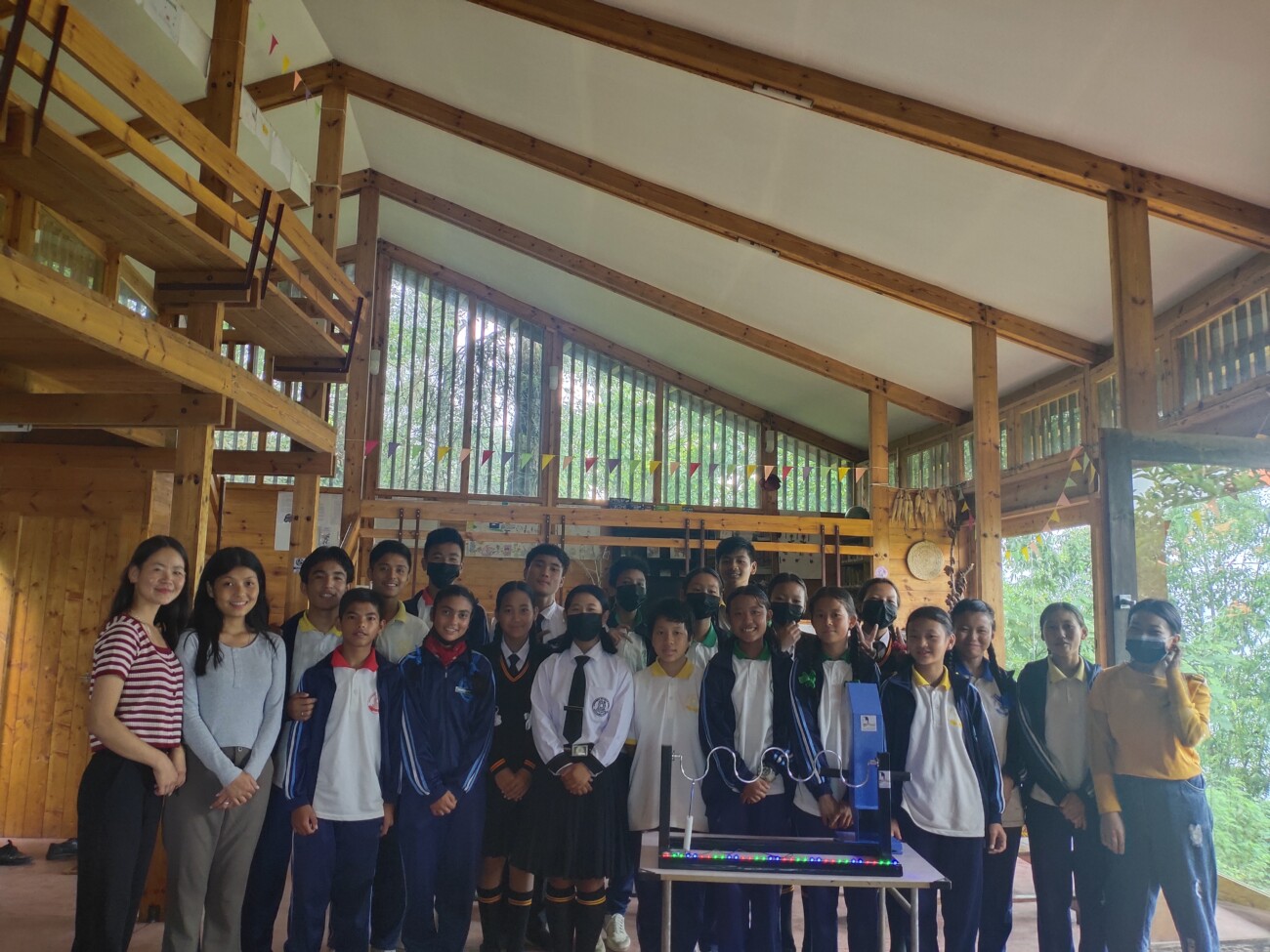
The key strategies and assessment tools that have been applied successfully at the Reading Room are:
Reading Aloud: This strategy is the friendliest way to help children read, comprehend and think critically, and is the foundation for literacy development and language acquisition. The Reading Room has been making use of the wonderful collection of picture books to support the read aloud strategy. Visuals and illustrations in the picture books play a vital role in learning.
Vocabulary Instructions: This is a strategy to build vocabulary in children. The instructions are drawn from Robert Marzano’s six steps to vocabulary instruction. Depending on time a word or two are identified during a read aloud session or one of the discussions which are then introduced to the children. The lesson plan involves stating the meaning of the words in the simplest term and a sentence using the word along with an appropriate illustration. Children go through a series of activities where they experience learning in a fun way.
Phonics: It is a way of teaching how to read and write in an alphabetic language through letter and sound relationship. It helps a child blend the sounds of letters to decode unfamiliar sounding words. It will fully be observed and practiced at the library as soon as the reading teachers show mastery over their teaching.
Reading Assessment: This strategy helps analyse a child’s reading and comprehension level and helps the teacher devise guided reading and map reading performance of a child. A small project is underway to assess the reading levels of the children who visit the Reading Room regularly. Based on the data collected so far, we have come to the conclusion that most children can barely read a text appropriate for their age and school year; also, their decoding and comprehension level is far below what is normally expected of their age.
The "Reading for Joy" project grew out of our understanding of the ground realities and perhaps we have found effective ways to address this problem. The success of this programme depends on collaboration of schools and parents and of course, the children themselves. It is too early to assess the impact but one thing we know is that we must be tenacious and innovative in addressing this critical lacuna, that if not addressed will have devastating effect on our society as a whole.
Rajiv Gandhi Foundation: Collaborating Organization
Rajiv Gandhi Foundation in Delhi has been collaborating with the Reading Room for more than a year now. Ms. Kursongkit Lepcha, Programme Associate at the Reading Room is a fellow of the Foundation in Sikkim.
Reading Room has been supporting the Foundation’s message on ‘Sadbhavana with nature’ among young children in Assangthang-Namchi along with its science program called GeNext STEP (Generation Next Science, Technology and Entrepreneurship Practice).
Set up on June 21, 1991, Rajiv Gandhi Foundation was founded to realize the vision of Shri Rajiv Gandhi, former Prime Minister of India. The Foundation works on a number of issues including health, education, science, women’s and children’s development, Panchayati Raj Institutions, libraries etc.
The aim of GeNext STEP is to develop curiosity and scientific temper among children through a fun learning process. It focuses on connecting and learning facts about science in the language of children.
The programme became a part of the activity of the Reading Room in August 2022. The foundation has sent 40 science kits to introduce science concepts to children. The collaborating schools have expressed their interests to use the science teaching kits. Some kits have been introduced to the children during their visits to the library. Children from various grades from Nandugaon SSS, Salghari SS and Purano Namchi Primary School have been a part of the science sessions at the library so far.
Reading Room has organized 5 GeNext STEP sessions for the regular children from the village in September 2022.
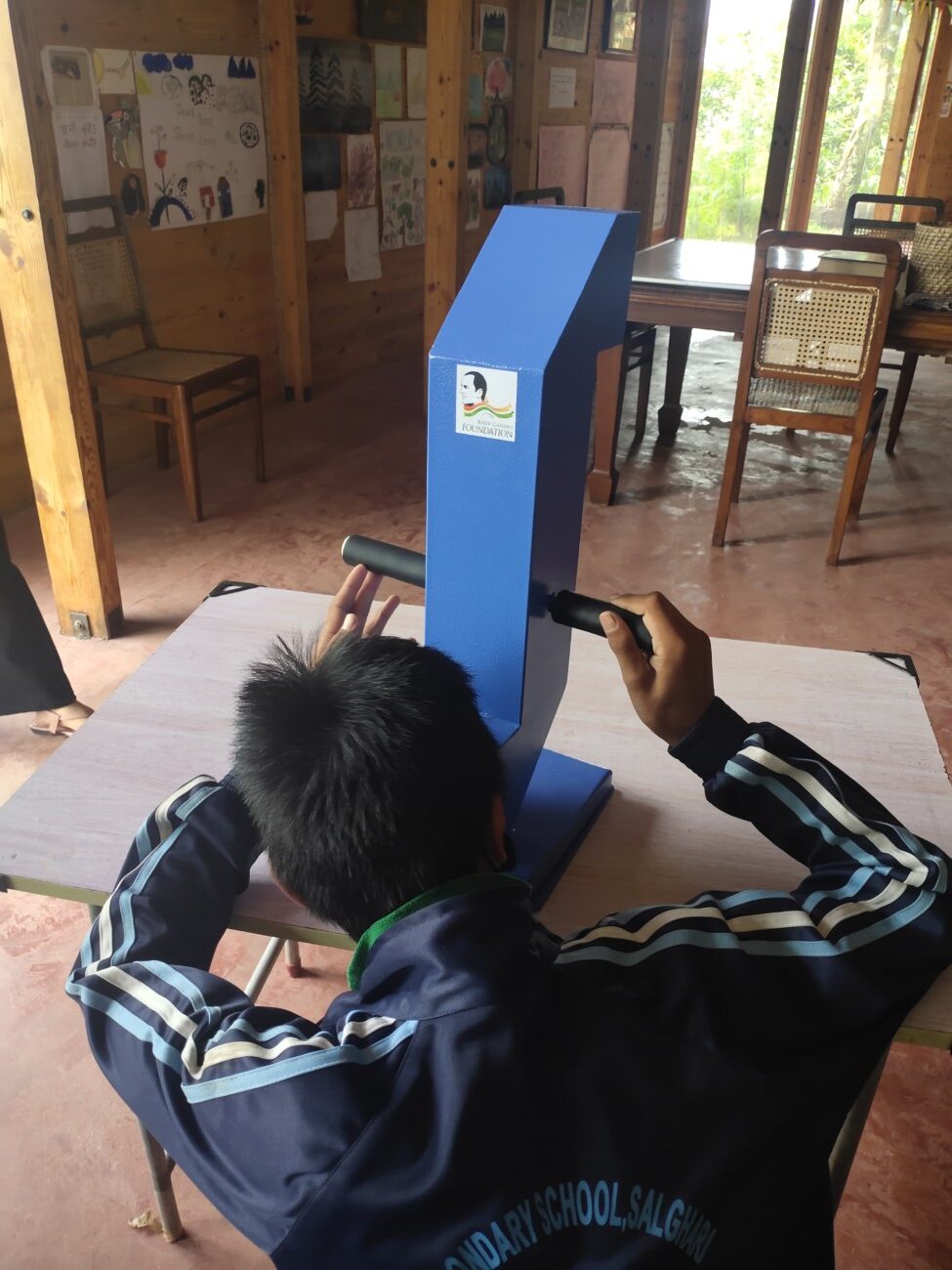
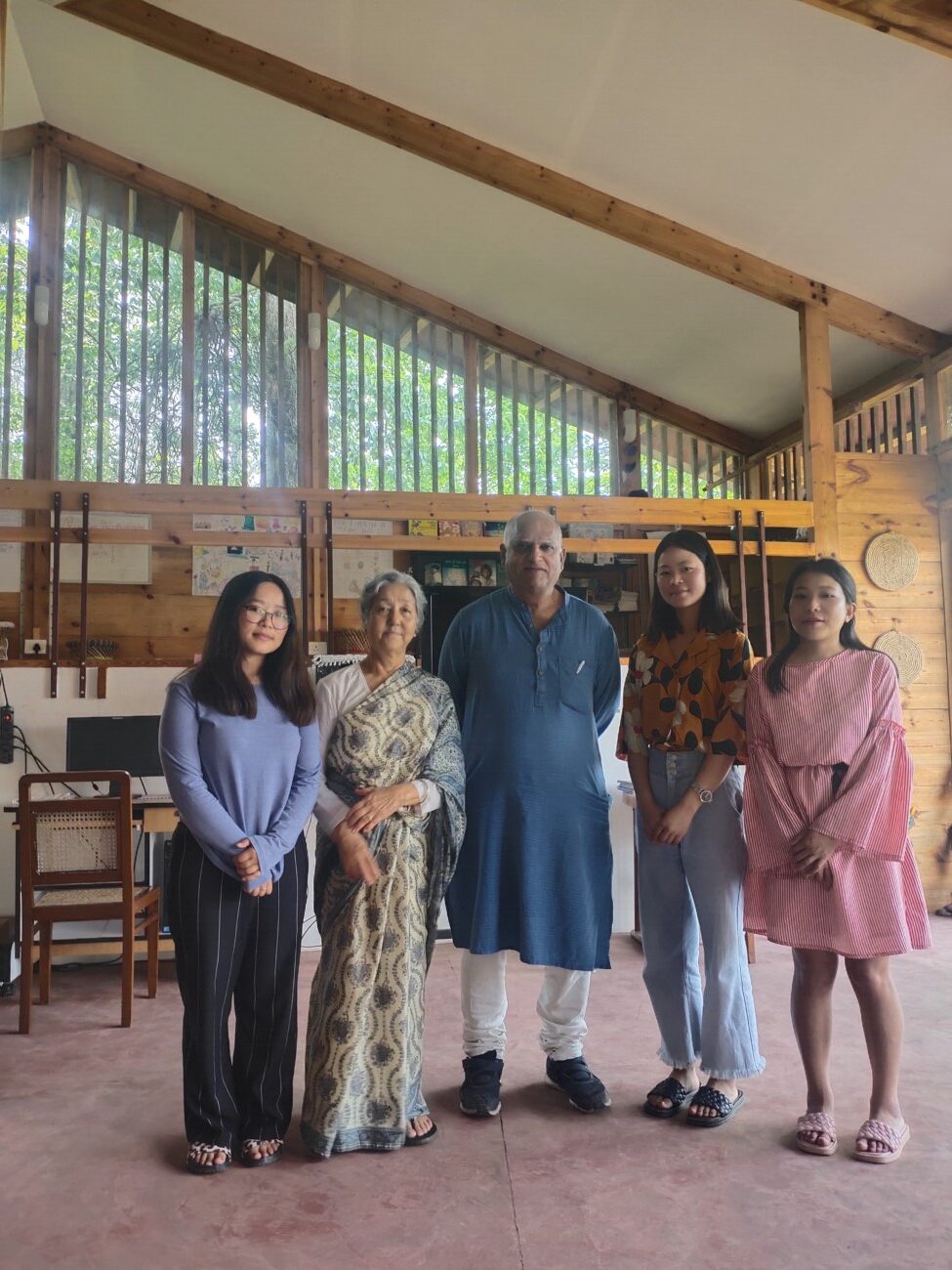




The Sikkim Project website
In October 2022, the Sikkim Project, a bi-lingual website completed a year. However, like the Reading Room, the idea, research and strategy for the website began germinating in 2014. What began as a journey for stories and images for a coffee table book on Sikkim, allowed us to search deeper and widen our scope for stories that are seldom told. The idea was to break the cliches of idyllic portraits and scenic beauty. We travelled to every part of Sikkim, met and interviewed countless people and listened to their stories. We complemented our conversations with research and readings.
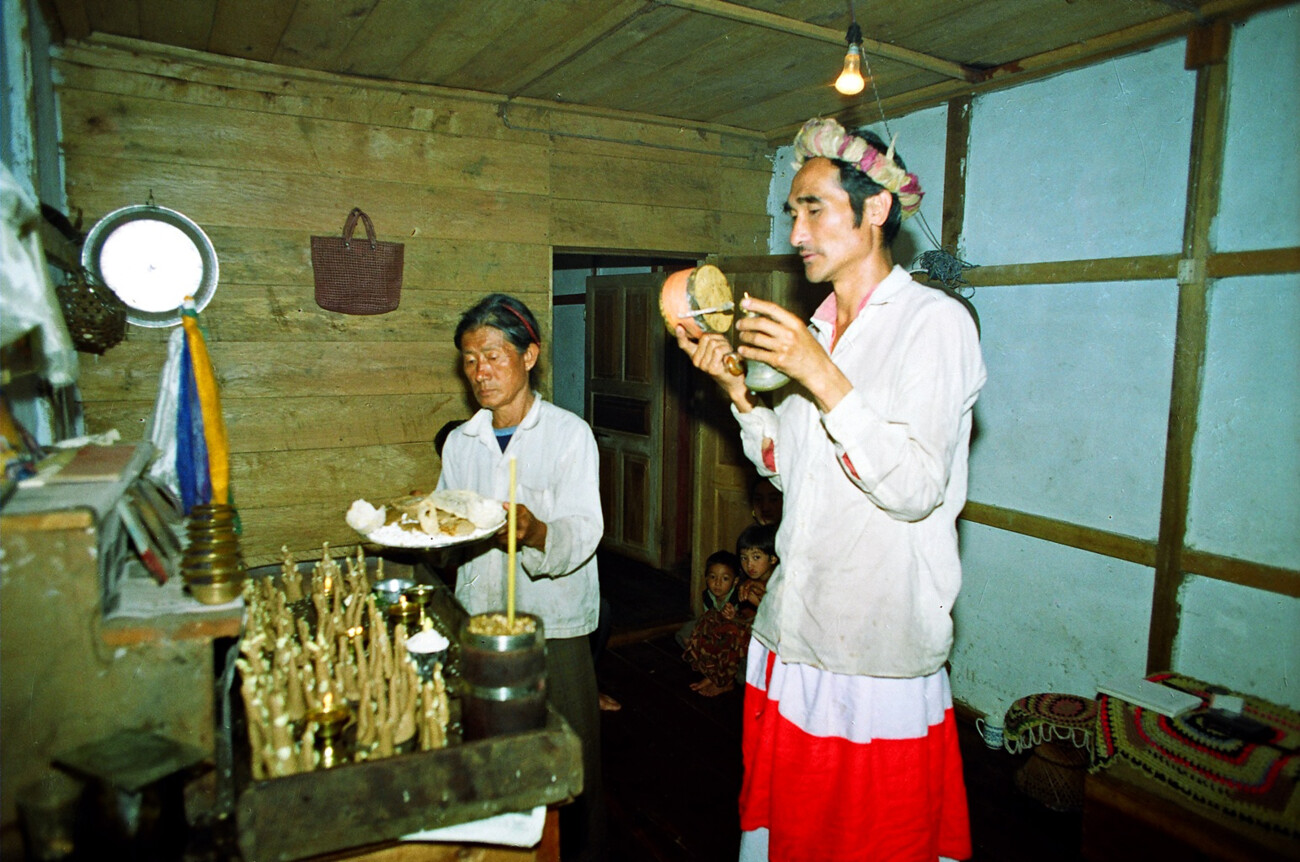
LAMAS AND SHAMANS OF THE SACRED HIDDEN LAND
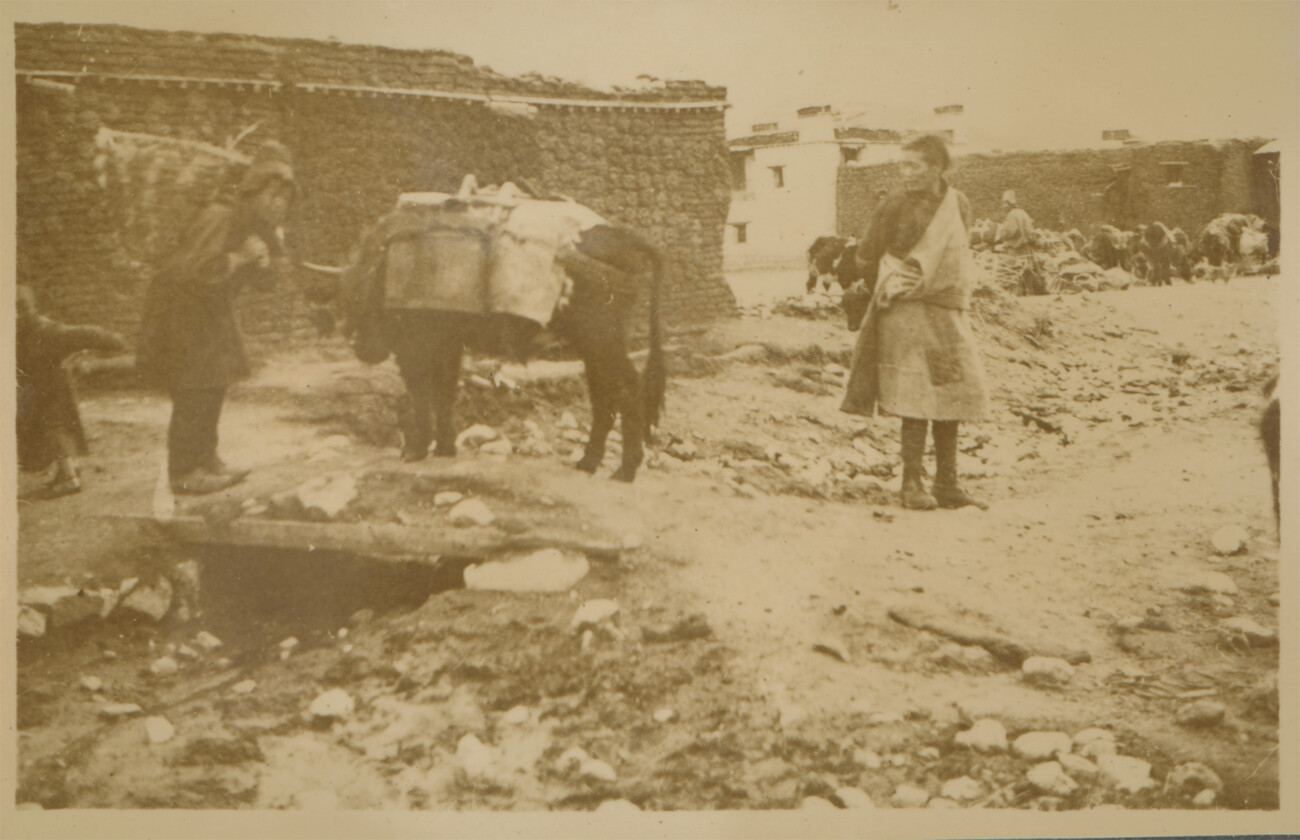
RHENOCK: THE FIRST HALTING STATION ON THE SILK ROUTE
During our travels we became acutely aware of the achingly beautiful landscape and met with warm hearted and generous people who willingly shared their stories with us. The idea of the website grew from the stories we had collected and the wonderful photographs that Praveen Chettri, the official photographer of the project had taken. The website is a platform for writers, researchers and for the members of the public to engage in conversations about all things Sikkim, and Sikkim in the eastern Himalaya. In the past one year we have published articles on the environment, history, culture, politics, and development in/of Sikkim. These articles have been authored by an eclectic mix of researchers, academics, and artists. Photographs are an integral part of our website and the articles, for we believe that an image has the power to capture the essence of a situation in ways different to words, and maybe sometimes even more evocatively.
The journey of the Sikkim Project has just begun, and we are encouraged by the support and enthusiasm that we have received from different parts of the world; this in turn, has strengthened our understanding in the need and value of a platform like the Sikkim Project. Articles in the Sikkim Project are published in both English and Nepali and we believe this is perhaps, one of our most important contributions, as stories and voices of/from Sikkim are no longer constrained by the English language. Knowledge, information and research on Sikkim is often impeded by access, and hence, one of our aims is to bring research and writings on Sikkim to a wider audience. The beauty and power of the digital world is that we can reach an unimaginable number of readers spread over a wide geographical area. In our last count we have reached more than 22,000 readers in different parts of the world. But more significantly many young people from our region are visiting the website; we hope this will lead to new research and study on Sikkim.
The website is an ongoing activity, and although the journey has just begun, we are encouraged by the level of engagement of our readers as we are preparing for the year ahead. Below are some excerpts of comments from our readers:
“When stories never told before and tales rarely heard of are given to us, it changes perspectives and perhaps even lives! This was a wonderful read” (Commenting on Through Whose Eyes? The Works of Partuman Lohrung Rai)
“Heartening to see the lamp of Sikkim’s gracious culture being tended in this publication. Kudos to the team that’s launched the Sikkim Project. I look forward to more articles & photographs.” (Commenting on Reviving Limbu Language and Culture)
'These were things unknown to most of us. Even if we were constantly using social medias. Very interesting and informative 👍🏻👍🏻"(Commenting on Echostream:A Collective of Designers and Dreamers)


Quite an achievement. Not an easy thing to do. Big congrats, Prava Rai.
Commendable initiative by Prava. In fact,it is revolutionary. It will hopefully bring about consciousness among the local teaching community and parents on the benefits of the reading habit being inculcated by Prava. Mount Hermon, Darjeeling, Prava's alma mater, would be justifiably proud that one of its students is putting into practice the School's motto " Education not for school but for life".
I looked through the article in vain for the name of Prava Rai, whose brainchild this initiative was & who built & financed the project. Modest & retiring as always, so let me blow her trumpet!